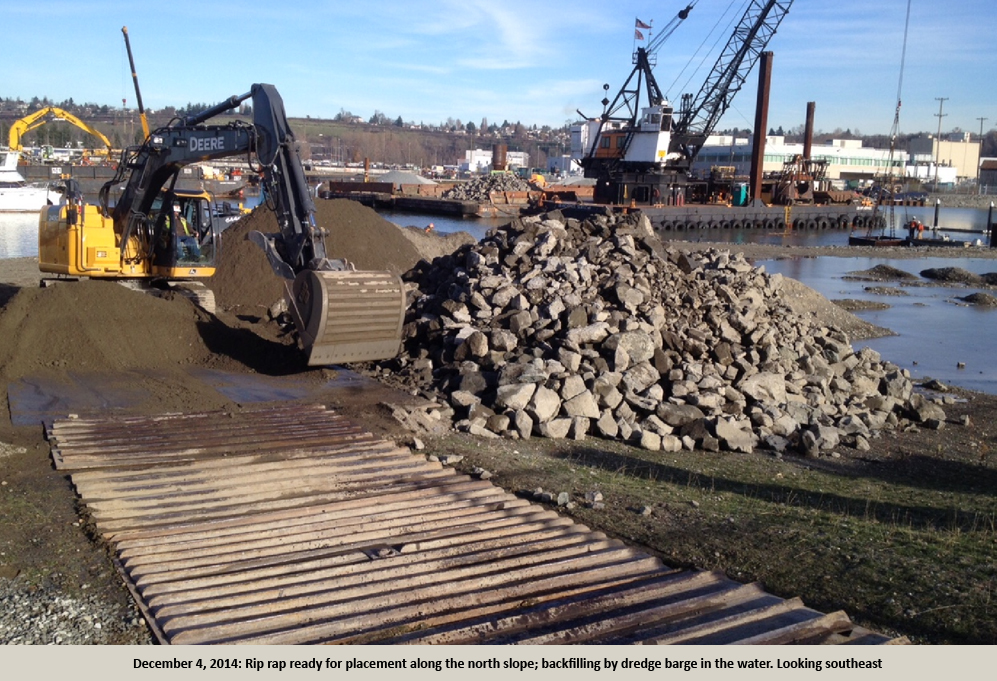Trackout happens when you back trucks off of the steel plates onto dirt to unload materials. The plan was for trucks to stay on plates, back to the end and dump. The excavator was to move the materials around the site. There is no tire wash on this project as there isn’t room, so staying on the plates is required and necessary. The trackout is onto the neighbors parking lot, our only site access, and they don’t appreciate dirt ending up in their stormwater swale when the rains come.
October 20, 2020
Steel Plates Trackout
September 21, 2020
Steel Plate Construction Access
This is a steel plate construction access that we built across a live stormwater swale. We have installed compost socks along the edge to keep construction runoff out of the swale.
August 24, 2020
Construction Access with Steel Plates
We built a construction access with steel plates across this stormwater swale. Then we laid compost socks and straw wattles along side of the eco blocks placed along the edges.
The adjacent parking lot drains into the swale and must be protected from dirty construction stormwater discharges.
October 22, 2020
Stay on the Plates
Please stay on the steel plates! We are using steel plates for a construction access to this long, narrow site. We exit onto the parking lot of an adjacent company. Sediment trackout is not an option. There is no place to install a tire wash, which I would normally require on a project like this. This requires a lot of oversight to work and one of the things we expect is for trucks to stay on the plates so they don’t pick up any dirt on the tires. This driver didn’t get the message, and the excavator operator could have beeped to stop the driver from backing too far.
October 15, 2020
Sediment Trackout Happens
Sediment trackout happens when you back trucks off of the steel plates onto dirt to unload materials. The plan was for trucks to stay on plates, back to the end and dump.
The excavator was to move the materials around the site. There is no tire wash on this project as there isn’t room, so staying on the plates is required and necessary. The trackout is onto the neighbors parking lot, our only site access, and they don’t appreciate dirt ending up in their stormwater swale when the rains come.
May 28, 2020
Prevented Trackout

We prevented trackout by placing grizzlies from the road back into the site. Truck drivers backed up to the steel plate near the excavator and dumped their loads. The excavator operator moved the material into the proper piles. The truck tires came in clean, stayed clean on the grizzlies and left clean. With thought and planning, we didn’t need to install a tire wash.
June 25, 2015
Low Impact Construction
Low Impact Development for Public Works Construction:
Erosion and Sediment Control Compliance
David S. Jenkins, Seattle, Washington
Introduction
Construction is a messy business; in the Puget Sound region of western Washington, with average annual rainfall of 40″ to 60″, it can also be challenging. Uncontrolled erosion from a construction site can generate 10-1000 times the quantity of sediment that occurs naturally from vegetated areas. Most construction in western Washington occurs near wetlands, streams, lakes, or the Puget Sound where sediment loss can reduce beneficial uses, or worse, destroy a salmon stream.
This paper will discuss proven methods that public works professionals can utilise to improve erosion control compliance and reduce project impacts.
(more…)